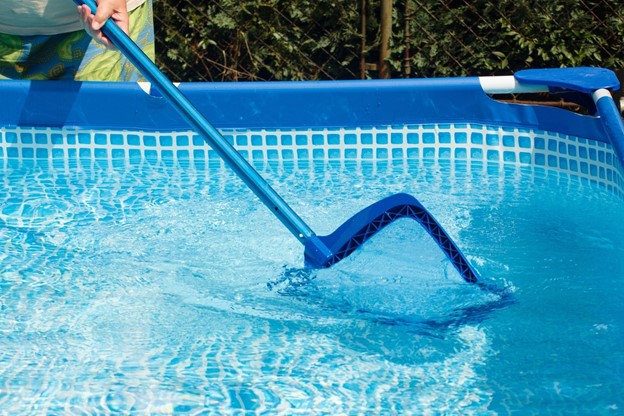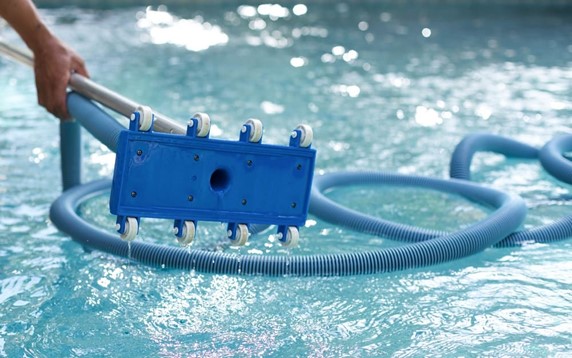Do you take proper care of your above-ground pool? In order to enjoy it over the summer season, you should maintain its condition. Regular maintenance includes cleaning, ensuring proper circulation, and keeping an optimal chemical balance.
Although many homeowners are tempted to put off these chores, they are advised to follow a strict maintenance checklist. By avoiding the chores, you’ll be only doing harm to your own health and the well-being of all swimmers.
The tips below will help you take good care of your above-ground pool.
Keep it clean
One of the essential maintenance tips is keeping the unit sparkly clean. The usual cleaning procedure involves skimming, brushing, and vacuuming your pool to eliminate the accumulated debris and dirt. Start by cleaning the water surface with a leaf net to remove the leaves and other floating objects. This task should be performed daily or a couple of times a week. Go here to see some useful ways for getting leaves out of your swimming pool.
The following step of the cleaning process involves brushing the ladder, steps, and walls. Brushing does wonders for improving water circulation, facilitating debris collection for vacuums and filters. The final step of your weekly cleaning chore includes vacuuming the bottom to remove any remaining debris.
If you lack time to perform the vacuuming manually, you can purchase an automatic pool cleaner. These automatic cleaners are available in the form of pressure side, suction side, and robotic cleaners. Such high-tech devices are a substantial investment, but they’re worth every penny.
Ensure proper circulation
Besides keeping your above-ground unit clean, you should ensure the water flows properly. A pump and filter are necessary to circulate and filter the water. Poor circulation results in algae growth, which reduces water quality. The pump is supposed to run between eight and twelve hours during the summer months, as well as between four and six hours in winter.
Another useful tip to have in mind is angling your jet. The purpose of jets is to deliver the water from the filtration machine back to the pool. Although pumps perform an excellent job, some parts of the pool are still inaccessible for them to reach. These portions can be reached by setting the jet at the right angle to induce proper circulation. The jets should be pointed at 7 and 8 o’clock for utmost accuracy.
Moreover, the skimmer and pump basket must be cleaned frequently, at least several times per week. If these parts get clogged, the machine will be incapable of cleaning the water. Filters should also be maintained regularly by checking the pressure gauge. If the psi is higher than 15, it means sand and cartridge filters have to be cleaned. Check this link, https://www.huffpost.com/entry/this-is-what-a-clean-healthy-pool-should-actually-smell-like_n_5773eddee4b0d1f85d47f71c, to see how a clean pool should actually smell like.
Maintain a chemical balance
The chemical condition of swimming pools is absolutely significant for all swimmers. Therefore, you should have the alkalinity, PH, and water hardness checked once every week or twice weekly. The PH is supposed to be between 7.2 and 7.6, whereas alkalinity from 100 to 150 ppm.
The sanitizers are also important for water quality. You are advised to use three types of sanitizers to keep the water balanced, including chlorine-based, bromine-based, and biguanide-based sanitizers. The particle range of chlorine-based sanitizers should be 1-3 ppm. Bromine-based sanitizers need a particle range of 3-5 ppm. Ultimately, biguanide-based sanitizers should have a range from 30 to 50 ppm.
In addition, homeowners are recommended to use the shocking technique, referring to the use of numerous chemicals for effective cleaning. Such a procedure should be performed either every week or bi-weekly. If you use a liner, don’t forget to inspect its condition twice annually for punctures and rust formation.
Winterize it properly
At the end of the swimming season, homeowners are expected to winterize their above-ground pools. This practice, however, isn’t the case with individuals who use their pools not just in summer but all year round. The walls of the best round above ground pools are treated against outdoor elements. Anyhow, the winterizing procedure should still be performed.
Winterization involves a thorough cleaning and adding a special winter chemical kit. All the chemicals and the ladder should be removed and stored somewhere dry. The filter has to run for an hour prior to switching off the pump and the motor. The water level should be lowered to below the skimmer. Make sure not to drain the unit completely to avoid hydrostatic pressure damage. The final steps involve adding anti-freeze and covering it with a special winter cover.
The bottom line
Being a pool owner means taking responsibility for maintaining its cleanliness and water health regularly.
You need to put some effort in order to enjoy swimming!
this is a collaborative post



This is such great advice thank you. I’ve just bought one and want to make sure I keep it in tip top condition for as long as possible.